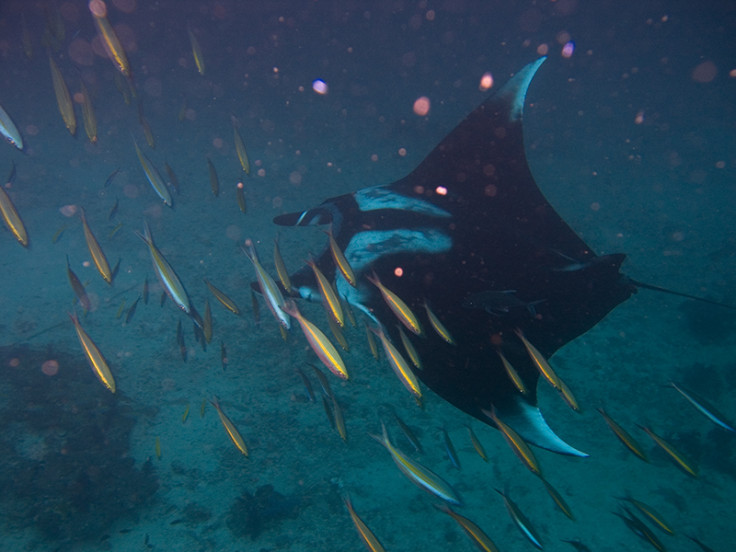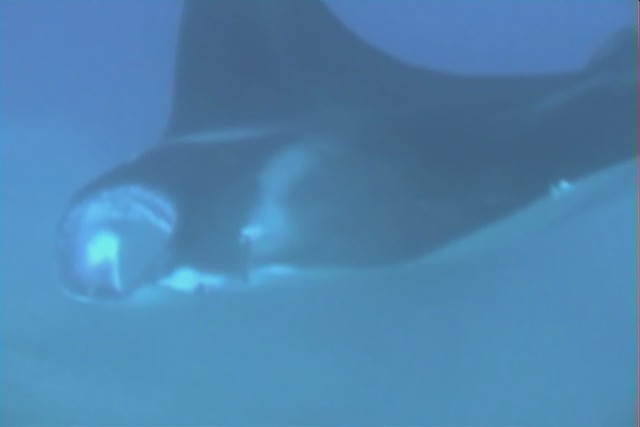Giant manta ray gets its food from the deep – and may be at risk as fisheries expand
The iconic sea creature feeds on plankton well beneath the surface, isotope analysis shows.

The giant manta ray prefers to eat plankton in the deeper ocean rather than food at the surface, research has found.
These plankton-feeders – or planktivores – can measure 7 metres across (23 feet). Their habits have proven elusive to biologists. Most information on the giant manta ray's diet has come from chance observations at the sea surface in daylight.
"Despite considerable study many aspects of their biology and ecology remain enigmatic," researchers from the University of Queensland write in a paper published in the journal Royal Society Open Science.
Sightings have been rare until now. A group of manta rays has been identified and studied off the coast of Ecuador, giving researchers unprecedented access to a manta ray group.
The researchers analysed the muscle of the giant manta ray for isotopes of nitrogen and carbon.
The ratio of isotopes of nitrogen changes as they pass up the food chain – the lighter isotope of nitrogen, <sup>14N, is lost more rapidly than the heavier isotope, <sup>15N. Carbon isotopes that are in a predator's muscles tend to vary in depending on the type of organism that it feeds on – for example, surface algae tend to have less of the heavier <sup>13C isotope than the lighter <sup>12C isotope.
The researchers looked at the isotope concentrations of carbon and nitrogen in a tiny sample of muscle taken from the manta rays. They found that the giant fish mostly fed on plankton in the mesopelagic region – between about 200 and 1,000m below the surface. Manta rays can dive to depths of about 1,400m, the authors say.
Individual mantas had a lot of variation in the nitrogen isotopes, suggesting that particular animals might specialise in different kinds of prey. This could help to reduce the competition for resources within the species, the researchers say.
Giant manta rays are valuable to the local economies where they are found by attracting tourists, as well as having an important ecological role for scavengers when they die and sink to the ocean floor, the researchers say.
However, manta rays are at risk from open-ocean fisheries that see the mesopelagic region as the "next frontier" for their industry. "It is concerning that we still do not fully understand the reliance on this zone by marine megafauna that already face threats in well-characterised surface habitats," the authors conclude.
© Copyright IBTimes 2025. All rights reserved.






















